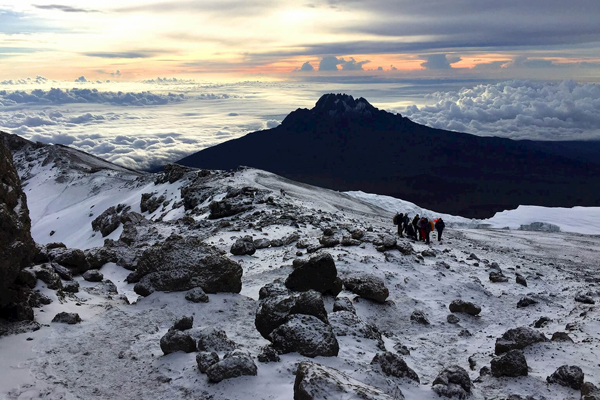
Mount Kilimanjaro, the highest peak in Africa at 5,895 meters (19,341 feet), is one of the world’s most iconic mountains. Located in northeastern Tanzania, it is a UNESCO World Heritage Site and a major destination for adventure seekers and nature lovers. Mount Kilimanjaro National Park, covering 1,668 square kilometers, is home to diverse ecosystems, from lush rainforests at the base to alpine deserts at the summit. The mountain is famous for its striking snow-capped peak, which rises above the African savannah and offers an incredible backdrop for those attempting to summit the peak. Kilimanjaro is not only a natural wonder but also holds significant cultural importance, especially to the local Chagga people who live on its slopes.
Kilimanjaro’s diverse ecosystems provide a variety of flora, which changes dramatically with altitude:
Kilimanjaro National Park may not be as rich in big-game species as other Tanzanian parks, but it supports a variety of wildlife in its lower and mid-altitudes:
The Marangu Route, often referred to as the “Coca-Cola Route,” is the most popular route to the summit, thanks to its relatively gentle slopes and established infrastructure. However, other routes like Machame and Lemosho are preferred by those looking for a more scenic and less crowded experience. All routes lead climbers through different ecological zones, providing an incredible opportunity to experience diverse ecosystems, from tropical rainforests to alpine deserts. The ascent typically takes several days, with climbers stopping at various camps to acclimatize and enjoy the changing scenery.







Explore the wonders of Africa with AWA Tours, your gateway to authentic and sustainable travel experiences. Specializing in eco-conscious safaris, cultural immersion tours, and off-the-beaten-path adventures, we bring you closer to Africa’s breathtaking wildlife, diverse cultures, and pristine landscapes. From thrilling Big Five safaris to serene beach escapes and community-focused travel, AWA Tours curates unforgettable journeys tailored to modern explorers seeking adventure, connection, and responsible tourism.
By subscribing to our newsletter, you’ll gain access to:
✔️ Exclusive Travel Deals & Discounts
✔️ Insider Travel Tips & Guides
✔️ Updates on New Tours & Destinations
✔️ Stories from Real Travelers & Stunning Photography
Whether you’re dreaming of conquering Mount Kilimanjaro, relaxing on Zanzibar’s pristine beaches, or witnessing the majestic Great Migration, AWA Tours has something special just for you.
2024 Awatours. All rights reserved.